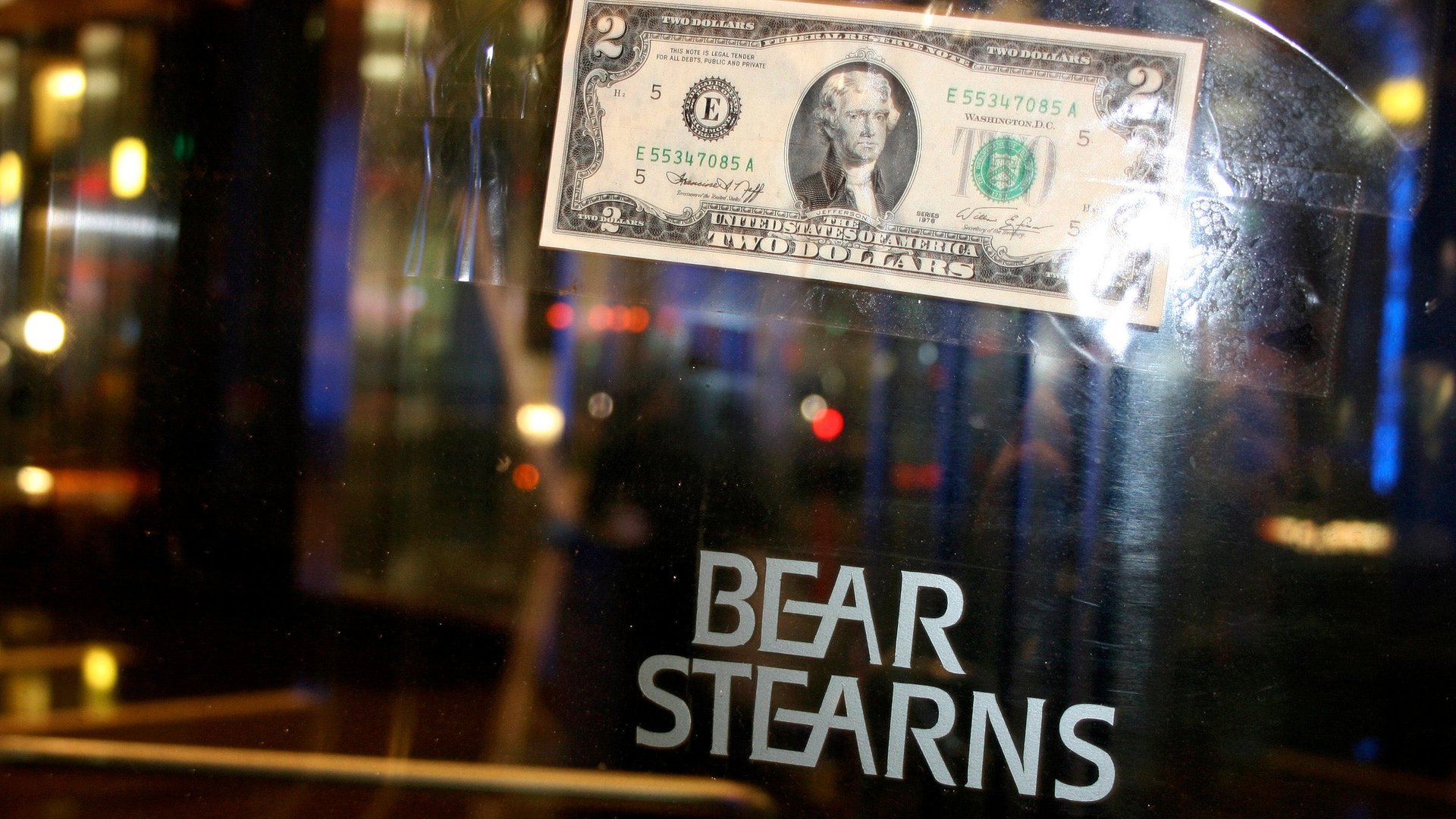JP Morgan didn’t do anyone a favor by acquiring failed banks
While JP Morgan and the US government are solidifying negotiations on a $13 billion fine for mortgage-related wrongdoing, we’re starting to hear more of a certain meme: Punishing the bank isn’t fair because in buying up failing banks during the financial crisis, it did the government—and the global economy—a huge favor.


While JP Morgan and the US government are solidifying negotiations on a $13 billion fine for mortgage-related wrongdoing, we’re starting to hear more of a certain meme: Punishing the bank isn’t fair because in buying up failing banks during the financial crisis, it did the government—and the global economy—a huge favor.
But that’s revisionist history. JP Morgan wasn’t doing anyone a favor; it was seizing a hugely profitable opportunity and was aware of the potential risks at stake.
This investigation concerns the fraudulent sales of mortgage-backed securities to Fannie Mae and Freddie Mac. The securities were misrepresented as sound, and when the government had to nationalize the two insolvent housing lenders, it cost taxpayers hundreds of billions of dollars. JP Morgan only sold about one-third of the securities in question; the rest were inherited liabilities from two failed financial institutions JP Morgan bought during the financial crisis.
JP Morgan was simply following Warren Buffet’s adage: “Be fearful when others are greedy, be greedy when others are fearful.” During the 2008 credit crunch, Buffet followed his own advice by snagging a lucrative stake in Goldman Sachs when it needed capital. JP Morgan CEO Jamie Dimon, with his “fortress balance sheet,” was able to make acquisitions at a time when assets were cheap and other banks weren’t in the same position.
The Bear Stearns deal, described as “a major coup” for Dimon in March 2008, initially only cost $236 million, but irate shareholders demanded a JP Morgan’s bid be raised from $2 to $10 a share, for a final cost $1.5 billion. That’s just a little more than the $1.4 billion value of Bear Stearns’ New York skyscraper, which came with the deal. A month earlier, the failing bank reported assets of $400 billion, which was likely overstated, though not so much that the deal wasn’t a big win for JP Morgan—especially since the Federal Reserve provided $30 billion in financing for Bear Stearns’ illiquid assets. The deal also helped JP Morgan get into the lucrative prime broker business, something the bank’s executives had been considering (through an acquisition) for months.
Then, in September 2008, JP Morgan acquired the failed bank Washington Mutual, paying just $1.9 billion for an asset portfolio worth about $276 billion. JP Morgan had actually offered to buy Washington Mutual more than six months before, but had been outbid by a private equity firm that paid $7 billion for the firm and saw huge losses when the bank failed. After the acquisitions, JP Morgan went from being the fourth biggest bank in the US to the first, with new retail banks in states like Florida and California where it had been previously under-represented.
If JP Morgan hadn’t bought Bear Stearns and Washington Mutual, the up-front costs to the government might have been higher, but it also might have avoided the financial industry consolidation that critics fear will make future financial crises more damaging. And, as the government’s failed attempt to find a private buyer for Lehman Bros. shows, if JP Morgan and other banks didn’t see an upside from purchasing a troubled bank, they didn’t buy it.
These acquisitions helped shape the bank that JP Morgan is today, one that has been profitable every quarter except the last. The case for holding it financially liable for their past missteps is clear—those failed institutions would not have been so valuable had they not first profited from the problematic practices that would eventually bring them down.